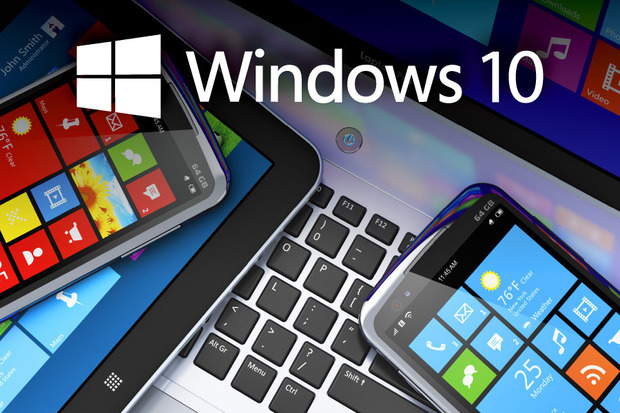
Windows 10 is going to be hugely important for businesses. That’s not a bold prediction about Microsoft’s latest operating system based on the hype – which boldly proclaims this will be the best Windows ever – but has been shown by a survey of IT professionals.
Spiceworks, a professional IT network, spoke to more than 500 people across a whole host of industries and came back with some interesting findings.
Chiefly, the study – entitled Windows 10: Will It Soar? – discovered that 73 per cent of IT professionals plan to adopt the new system – 40 per cent saying they will make the move within the first 12 months.
That level of movement would far outstrip the 60 per cent that moved to Windows 7 within the same time period, according to Spiceworks’ historic data.
Almost all – 96 per cent – of respondents are interested in Windows 10 while 60 per cent of IT departments have already begun testing it.
It’s a level of active interest that shows businesses are looking beyond the hype and taking this launch seriously.
Sanjay Castelino, VP of Marketing at Spiceworks, said: “Microsoft’s stated goal of 1 billion Windows 10 devices in 2-3 years is achievable, and strong interest from IT buyers bodes well for the entire Windows 10 ecosystem.
“However, it’s important for technology brands to understand the issues that matter most to IT buyers in a business context do not align with those of consumers, and brands should prepare to educate IT professionals accordingly.”
That last point is particularly important to consider.
IT professionals might be won over by the appeal of Windows 10, but it’s not necessarily the flashy features of the adverts that cause this – it’s the features that have a more direct impact on the operations of the business that have built a compelling case for switching.
Desire for stability
The Spiceworks study is not just significant for the level of interest it shows in Windows 10 among IT decision makers. The results also reveal that the features they are interested in reflect the priorities they have at work.
Understandably this means stability and simplicity are at the forefront of their minds. Spiceworks said:
*64 per cent of IT professionals said that, of all the features, they were most interested in the return of the Start button (perhaps the biggest symbol that Windows 10 will be familiar, easy to use and require little training). The chance to upgrade for free and enhanced security were the second and third most popular responses.
*Just eight per cent said they were interested in the touch-optimized interface and six percent cited Cortana, the voice operated rival to Apple’s Siri that makes its move over from Windows phones.
*A quarter of respondents were positive about the new Edge browser, 23 per cent were neutral, four per cent negative and the rest waiting to see more of Microsoft’s new browser.
*Seventy-nine percent cited hardware/software compatibility as their biggest concern followed by early release bugs, user training, third party support, and the time it would take to complete the upgrade process.
*94 per cent said they were running Windows 7 – putting this far ahead of 8/8.1, XP and Mac OS. The signs are that Microsoft has listened to feedback and understood why many users stuck at 7 and didn’t make the jump to the much-maligned 8.
Migration made easy
Businesses may want stability, familiarity and security to be at the heart of the new operating system – but they also want to reach the new version with as little pain as possible.
It’s likely that the most recent migration might have been a tough experience for all involved – involving hours of desk visits and, as a result, leading to downtime that is costly, frustrating and potentially disruptive to the normal business operation.
The good news for businesses is that while technology and operating systems have moved on, so too has the way in which migration is carried out. The experts at 1E have put together an eBook, Zero-Touch Windows Migration, which spells out to IT professionals how they can use programs to eliminate a significant chunk of the work involved in a migration.
The book stresses that migration is about moving users, not software, and the focus should be about supporting the people within an organization to be able to maintain ‘business as usual’.
This means auditing the current operation and ditching any unnecessary parts of the IT estate for a start and then using packages that can automate the vast majority of the migration process which allows thousands of people to migrate on a daily basis.
The second part of this process saves time, while the first shows how moving to Windows 10 can be healthy – providing the necessary motivation to rationalize the apps a business currently uses and slashing the cost of licences for products that are not used.
An expert from 1E told us the Windows 10 launch as a whole delivers a huge chance to move forward.
They said: “Windows 10 is a chance for the systems management community to emerge and lead the charge, amplifying how potentially complex and costly exercises like OS migration can usher in an overall IT products and services value uplift and if we do not approach as a community, we will miss out on a ton of possibility.”
The demand and interest are clear – as is the need for stability and security and the ability to be able to migrate in a way that is much more straightforward than in the old ‘XP to 7’ days. But what ways can the new system deliver what businesses want and, ultimately, make their operation run better?
Universal Windows Apps
Windows 10 will utilise universal apps that work across all devices. This is good news for businesses that juggle a series of devices. Messaging, Mail, Calendar, People, Photos, Videos, Maps, and Music will all be similar no matter what device they are needed on and the content within each item is stored using OneDrive so projects can be picked up across different devices, making work on-the-go much simpler.
Staple diet software products such as Word, PowerPoint and Excel will be redesigned so that they are optimized for touch-screen tablet and smartphone users.
Enhanced Security
Microsoft aims to embrace new security measures with Windows 10, including the use of biometrics in conjunction with Windows Hello. A scan of the face, eyes or fingerprints will be able to get users into applications and content instead of traditional password – the management of which is a long-standing headache for IT departments.
This goes hand-in-hand with the Azure Active Directory, a cloud-based method of implementing identity and access management across an IT estate. Users will be able to use this to sign in to Windows directly, add a work account to a personal Windows 10 device (for BYOD users) or, if joined to an existing directory, get a single sign-on access to cloud-based services.
Just as with universal apps, this is all about flexibility for users who use a range of devices – while at the same time providing businesses with a way of managing a process that can otherwise become complex.
A new Device Guard feature is also geared up to combatting zero-day attacks, by automatically scanning apps and blocking those not signed by the Windows app store, vendors and enterprise.
Power saving
As system management and security features have developed to reflect a multi-device world, so too must the way power is used up by the new operating system. Windows 10 reflects the move to tablets, phones and hybrids with its Battery Saver tool that reduces the amount that background apps can sap away energy.
It’s automatically set to kick in when battery level drops below 20% – with the ability to manage which apps are and aren’t allowed to run in the background.
It can save about 45 minutes worth of battery life for a user – the difference between getting work competed on a train journey and not.
End user
Businesses may have different priorities to the end user, but that’s not to say the features that appeal to this market will not have a benefit for companies too. The Cortana search facility should make planning meetings and organizing workloads simple, the new Edge browser makes annotating and sharing web pages easy and the eventual tie-in Hololens launch should open up big opportunities in industry as well as for domestic users.
Game changer
Windows 10 will be the last ‘Big Bang’ release for Microsoft. From here on in the ‘Windows as a Service’ model will replace the need for a semi-regular push of the reset button, with updates for individual elements of the system to be issued as and when required.
This means two things for businesses. Firstly, the ability to update while maintaining ‘business as usual’, as discussed earlier, becomes crucial. Companies must pinpoint ways to implement this in a migration and beyond. Secondly, it marks the launch of Windows 10 out as something of a watershed moment. Tweaks, updates and improvements will be made with this system as a starting point. To get your business ready for the new world it’ll be important to get ‘up to speed’ first by making the move to Windows 10.
IT professionals have realized that Windows 10 is an important release for Microsoft. It’s clear that the new OS is more in tune with the needs of the modern business – with system management, security, power saving and flexibility at its heart to ensure that, no matter what you do, you can do it more efficiently going forward.
Windows 10 also builds on the strengths of its more successful predecessors, delivering an experience that is recognizable to existing users who should find it easy to pick up. With migration easy to perform – and regular updates soon to be a big part of life – businesses are also able to embrace all of the benefits with as little hassle as possible. With this in place you certainly wouldn’t bet against Microsoft’s prediction of having 1 billion devices on this system in just a couple of years.


